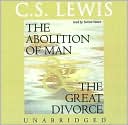Category Books
- Fiction Books & Literature
- Graphic Novels
- Horror
- Mystery & Crime
- Poetry
- Romance Books
- Science Fiction & Fantasy
- Thrillers
- Westerns
- Ages 0-2
- Ages 3-5
- Ages 6-8
- Ages 9-12
- Teens
- Children's Books
- African Americans
- Antiques & Collectibles
- Art, Architecture & Photography
- Bibles & Bible Studies
- Biography
- Business Books
- Christianity
- Computer Books & Technology Books
- Cookbooks, Food & Wine
- Crafts & Hobbies Books
- Education & Teaching
- Engineering
- Entertainment
- Foreign Languages
- Game Books
- Gay & Lesbian
- Health Books, Diet & Fitness Books
- History
- Home & Garden
- Humor Books
- Judaism & Judaica
- Law
- Medical Books
- New Age & Spirituality
- Nonfiction
- Parenting & Family
- Pets
- Philosophy
- Political Books & Current Events Books
- Psychology & Psychotherapy
- Reference
- Religion Books
- Science & Nature
- Self Improvement
- Sex & Relationships
- Social Sciences
- Sports & Adventure
- Study Guides & Test Prep
- Travel
- True Crime
- Weddings
- Women's Studies
The Abolition of Man and The Great Divorce » (4 Cassettes)

Authors: C. S. Lewis, Robert Whitfield
ISBN-13: 9780786198191, ISBN-10: 0786198192
Format: Audio
Publisher: Blackstone Audio, Inc.
Date Published: October 2000
Edition: 4 Cassettes
Author Biography: C. S. Lewis
C. S. Lewis was famous both as a fiction writer and as a Christian thinker, and scholars sometimes divide his personality in two. Yet a large part of Lewis's appeal, for both his audiences, lay in his ability to fuse imagination with instruction. "Let the pictures tell you their own moral," he once advised writers of children's stories. "But if they don't show you any moral, don't put one in."
Book Synopsis
In The Abolition of Man, C.S. Lewis asks if we have been taught to discount the veracity and deeper meaning of our emotional resonance with the world around us. He examines the curriculum of the English prep school and begins to wonder if this subliminal teaching has indeed produced a generation who discount such a nature. “St. Augustine,” he explains, “defines virtue as ordo amoris, the ordinate condition of the affections in which every object is accorded that kind of degree of love which is appropriate to it. Aristotle says that the aim of education is to make the pupil like and dislike what he ought. When the age for reflective thought comes, the pupil who has been thus trained in ‘ordinate affections’ or ‘just sentiments’ will easily find the first principle in Ethics; but to the corrupt man they will never be visible at all and he can make no progress in that science.” Yet the modern educational system around him, it seems, was bent on producing men without chests and...
Biography
C. S. Lewis was famous both as a fiction writer and as a Christian thinker, and scholars sometimes divide his personality in two. Yet a large part of Lewis's appeal, for both his audiences, lay in his ability to fuse imagination with instruction. "Let the pictures tell you their own moral," he once advised writers of children's stories. "But if they don't show you any moral, don't put one in."
Table of Contents
Subjects
 Christian Fiction
Christian Fiction  Christian Allegories
Christian AllegoriesFiction Books & Literature
 Essays
Essays  European Essays
European EssaysChristianity
 Christian Fiction
Christian Fiction  Christian Allegories
Christian AllegoriesReligion Books
 Christian Fiction
Christian Fiction  Christian Allegories
Christian AllegoriesChristianity
 Christianity
Christianity  Christian Fiction
Christian FictionNonfiction
 Religion
Religion  Christian Fiction
Christian FictionReligion Books
 Christianity
Christianity  Christian Fiction
Christian Fiction
